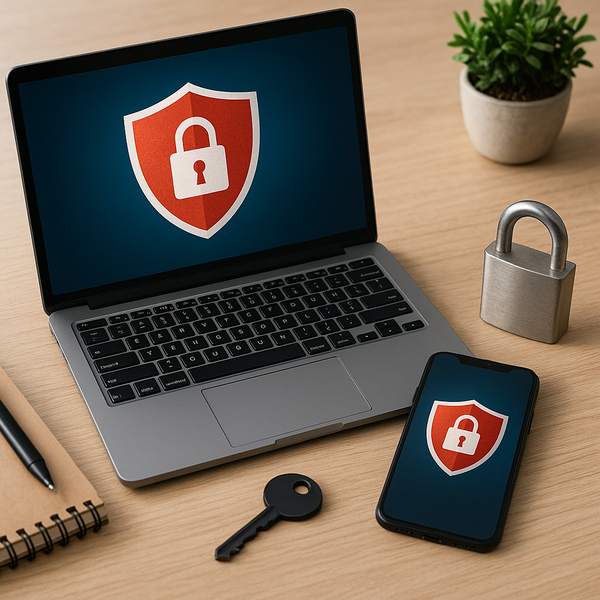
In today's interconnected world, our lives are increasingly tied to our digital devices. From smartphones and tablets to laptops and smart home gadgets, these tools hold our personal information, financial data, and access to sensitive accounts. Ensuring the security of these devices is no longer optional; it's a fundamental necessity to protect ourselves from a growing landscape of online threats.
Understanding the Digital Threat Landscape
The internet is a powerful resource, but it also harbors various dangers. Cybercriminals are constantly evolving their tactics to exploit vulnerabilities and gain unauthorized access to your devices and data. Understanding the common threats is the first step in effective device security. These threats include malware like viruses, worms, and ransomware, which can damage systems or hold your data hostage. Phishing attacks trick you into revealing sensitive information through deceptive emails or websites. Spyware can monitor your online activities without your knowledge, and adware bombards you with unwanted advertisements, sometimes compromising performance and privacy. Knowing what you're up against helps you prepare and implement the necessary safeguards.
Implementing Strong Password Practices
Your passwords are the first line of defense for most online accounts and devices. Using weak or easily guessable passwords leaves you vulnerable. A strong password should be unique for every important account and consist of a combination of uppercase and lowercase letters, numbers, and symbols. Avoid using personal information like birth dates, names, or simple sequences. Consider using a password manager, which can generate complex, unique passwords for you and securely store them, so you only need to remember one master password. Two-factor authentication (2FA) or multi-factor authentication (MFA) adds an extra layer of security, requiring a second form of verification, like a code sent to your phone, in addition to your password.
Keeping Software and Operating Systems Updated
Software developers and operating system providers regularly release updates. While these might seem like minor inconveniences, they often contain critical security patches that fix newly discovered vulnerabilities. Ignoring updates leaves your devices exposed to threats that malicious actors are aware of. Enable automatic updates whenever possible for your operating system (Windows, macOS, iOS, Android) and all installed applications. Regularly check for manual updates if automatic ones aren't available. Keeping your software current is one of the simplest yet most effective ways to protect your devices from known exploits.
Using Reputable Antivirus and Anti-Malware Software
Installing and maintaining reputable antivirus and anti-malware software is essential for detecting and removing malicious programs. Choose a well-known security suite and ensure it's configured to perform regular scans of your system. Keep the software's definition files updated so it can recognize the latest threats. While security software isn't a foolproof solution, it provides a vital layer of protection against a wide range of digital infections. It can also help prevent you from accidentally downloading or opening harmful files.
Securing Your Home and Public Wi-Fi Networks
Your internet connection is a potential entry point for attackers. Ensure your home Wi-Fi network is secure. Use a strong, unique password for your router's administration panel and for accessing the network itself. Use WPA3 or WPA2 encryption (WPA3 is preferred if available). Avoid broadcasting your network name (SSID) if possible. Be extremely cautious when using public Wi-Fi networks. These networks are often unsecured, making it easy for others to intercept your data. Avoid accessing sensitive accounts (like banking or email) on public Wi-Fi. Consider using a Virtual Private Network (VPN) when connected to public Wi-Fi to encrypt your connection and protect your data from snoopers.
Being Mindful of Phishing and Social Engineering
Cybersecurity isn't just about technical defenses; it's also about user awareness. Phishing attempts are becoming increasingly sophisticated. Be wary of unsolicited emails, text messages, or phone calls asking for personal information, login credentials, or financial details. Never click on suspicious links or download attachments from unknown senders. Verify the sender's identity independently if you're unsure. Social engineering preys on human psychology to trick you into making security mistakes. Always be skeptical of urgent requests or offers that seem too good to be true.
Regularly Backing Up Your Data
Even with the best security measures, things can go wrong. Devices can fail, be lost or stolen, or fall victim to ransomware. Regularly backing up your important data ensures that you won't lose everything in case of an incident. Use cloud storage services, external hard drives, or network-attached storage (NAS) devices for backups. Test your backup system periodically to ensure that you can successfully restore your data if needed. Having a recent backup provides peace of mind and is crucial for recovery from various digital disasters.
Enabling Firewalls and Understanding Permissions
Firewalls act as a barrier between your device and the internet, monitoring incoming and outgoing traffic and blocking potentially harmful connections. Ensure your operating system's firewall is enabled. Additionally, be mindful of the permissions you grant to mobile apps and software. Many apps request access to your contacts, location, microphone, or camera. Only grant permissions that are necessary for the app to function. Review app permissions regularly and revoke those you're uncomfortable with or that seem excessive.
Physical Device Security
While much of device security focuses on digital threats, physical security is also important. Keep your devices in secure locations and use screen locks (PIN, pattern, fingerprint, facial recognition). If a device is lost or stolen, remote wipe capabilities can help you erase your data to prevent it from falling into the wrong hands. Don't leave devices unattended in public places. Physical access can sometimes bypass digital safeguards.
Conclusion
Protecting your digital devices requires a multi-faceted approach. By staying informed about threats, implementing strong passwords and 2FA, keeping software updated, using security software, securing networks, being cautious online, backing up data, enabling firewalls, and minding physical security, you can significantly reduce your risk of falling victim to cyberattacks. Prioritizing device security is an ongoing process that pays off in protecting your personal information and maintaining your digital well-being.

